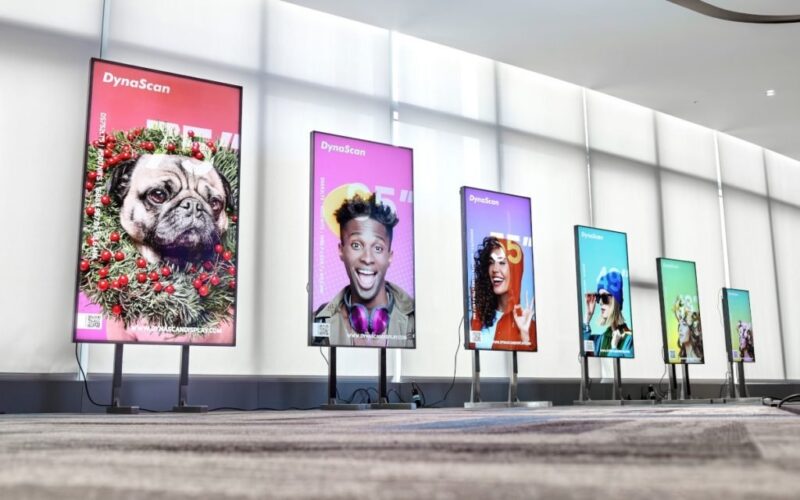Taipei | invidis met Alan Kaufman for a background discussion on challenges in outdoor signage and green signage. Outdoor signage is an art that requires a lot of experience, extensive testing and the right ecosystem.

Dynascan: Mission Impossible for Integrators
Reliable outdoor totems and smart kiosk systems require much more than just a bright screen and an enclosure. Most mass-produced digital signage totems not only come in boring designs and are ill-equipped to withstand the elements of nature, but usually have sub-optimal air circulation. „It is impossible for even experienced digital signage integrators to get everything right. Outdoor signage is highly complex and requires a lot of experience,“ says Alan Kaufman in conversation with invidis in Taipei.
Heat significantly shortens the lifespan of electronic components. „We have developed the perfect airflow over decades,“ says Alan Kaufman. It starts with two separate ventilation circuits completely separated from the outside world. Fans blow the warm air upwards from below. „We rely on a separate air circuit that cools the display panel at the front and back, as well as a separate air flow for the control electronics and power line.“

A quick visit to Dynascan’s test chamber shows how important proper ventilation is. Alan Kaufman explains: „The displays and electronics can get up to 50 degrees Celsius. Add to that the 20 to 30 degrees Celsius heat input from direct sunlight and we’re talking 70 to 80 degrees Celsius that need to be conducted out of the enclosure. Without experienced engineering and extensive testing, mistakes happen. We test every development in three test chambers: climate, rain and electromagnetic radiation. All here on site and fully certified.“
Efficiency and sustainability
Sunlight-ready outdoor screens, by definition, never go green. „But if you know the right levers, you can reduce energy consumption in a relevant way.“ For Dynascan, it starts with the backlight. In contrast to the commonly used edge LED backlight, Dynascan relies on a direct LED backlight developed in-house. „The brightness can be controlled much more precisely this way. With up to 5,000 nits, this is a big lever“, says Alan Kaufman.
The control of the brightness depends to a large extent on the external brightness. Without the right sensors in the right place, very little is possible. It is important that sensors are placed in such a way that they do not pick up the reflections of your own content and thus make the screens unnecessarily brighter. This also happens regularly in shop window installations. „Here, integrators often lack experience.“
But recurring external light events can also influence the automatic adjustment of brightness and thus lead to increased energy consumption. For example, traffic lights near screens and especially car headlights are a challenge for sensors. „Dynascan, as a specialist in outdoor and high brightness, has developed an intelligent control system based on AI that detects regular light events and controls the screen brightness in a sensible way“, says Alan Kaufman.
